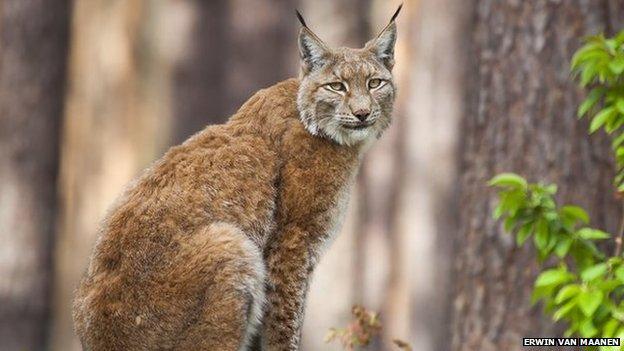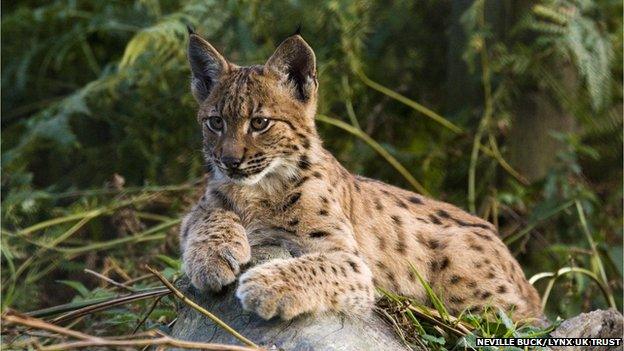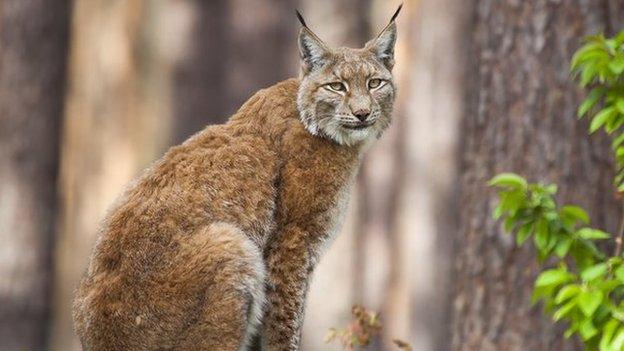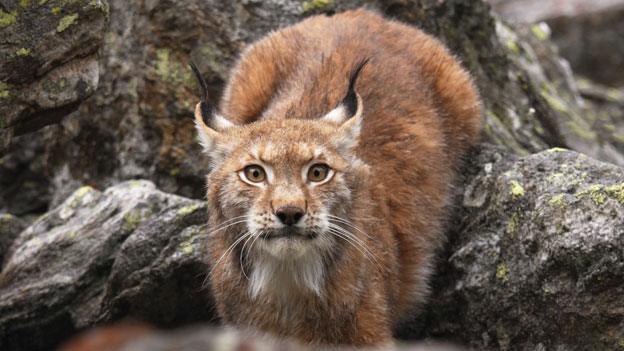Kielder Forest considered for lynx return
- Published

Wild lynx can grow to the size of a large dog and weigh up to 70lb
A forest in the North East is being considered as a new habitat for wild lynx which have been extinct in Britain for more than 1,300 years.
The Lynx UK Trust is holding a consultation into bringing the big cats to Norfolk, Cumbria and Aberdeenshire.
It is now considering Kielder Forest, in Northumberland, as another site as it has a large deer population - the main prey for lynx.
Sheep farmers have raised concerns about the animals attacking sheep.
The scheme would see four to six lynx, wearing radio tracking devices at each site, each of which are rich in deer and tree cover.
Once the Lynx UK Trust's consultation is completed, it will lodge a formal application with Natural England and Scottish Natural Heritage.
A spokesman for the trust said this could take many months.

Lynx cubs can expect an average lifespan of 10 years in the wild
Chief scientific specialist Dr Paul O'Donoghue, of the Lynx Trust, said: "These are beautiful cats which will fit beautifully into the UK environment.
"They're extremely shy animals which have never attacked a human anywhere they live, and everywhere they live their preferred prey is deer which we have a serious overpopulation issue with in the UK.
"Concerns raised by some sheep farmers at the plans have been met with assurances of a comprehensive and generous compensation program, and extensive research from Europe showing that lynx very rarely predate on sheep anywhere they live, preferring the hiding places of remote forestry to the open environment of farms or sheep moors."
- Published9 March 2015

- Published9 March 2015
